#melanistic alligator
Explore tagged Tumblr posts
Photo

A Melanistic & Albino Alligator
Photographer: snakebytestv
643 notes
·
View notes
Text
If you ever wondered what the best living vertebrate is, it’s the alligator gar in my totally not biased 100% scientifically backed opinion. They are just a flawless creature. Nothing wrong with them. Good tooth to snoot ratio, they have a winning smile.
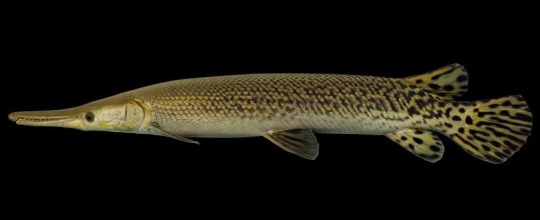
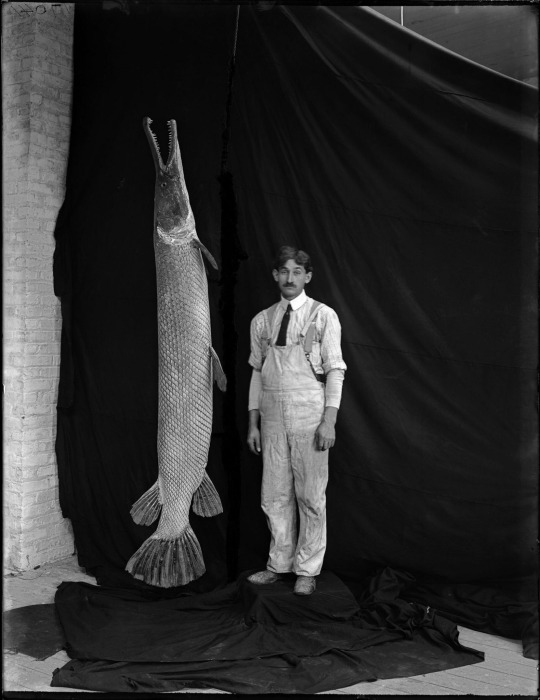
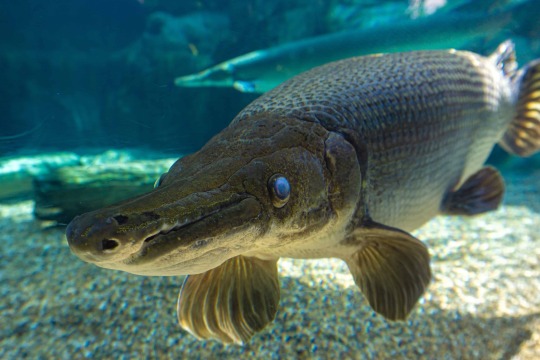
They and other monster fish absolutely should NOT be in the hands of most private keepers at all and I do NOT support morph breeding of them because of that, but pretty fishy cute :c
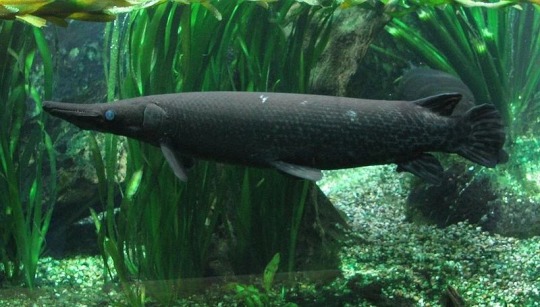
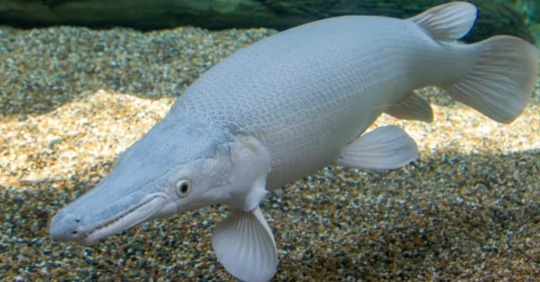
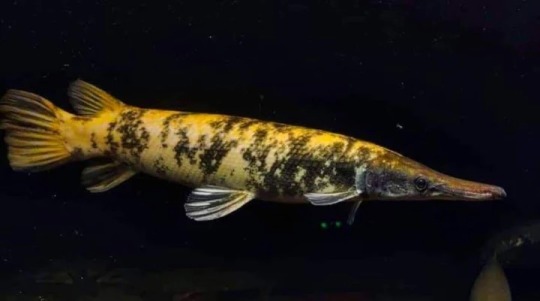
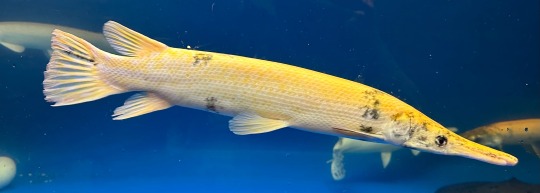
#they are my favorite animal c:#I recently settled on them after a lifetime of not knowing the answer#color mutation#selective breeding#alligator gar#atractosteus spatula#dead animal#hunting#I was ranting at an oddities expo about how much I love gar the guy asked me if I was from Texas#no I just really like them#wonderful armored scales and skulls too#melanistic#leucistic
4K notes
·
View notes
Text



the full gar lineup from this last batch!
melanistic, shortnose, tropical, alligator, golden, florida, and longnose gar!
#i actually made all seven species! but some had bad glaze defects OTL#ceramics#clay#sculpture#animal art#finished work#fish#420#gar
818 notes
·
View notes
Note
Hi again!
I've been so delighting in going back through some of your past answers this week and I loved rereading your daemon AU with BAMF Alec. I love all your Alec characterizations, but I have a particular fondness for your versions where it's really emphasized how cold and aloof Alec has to be in command sometimes. Alec allowing 'just a little nip' to Clary's otter was such an excellent visual.
If it happens to strike your fancy, I'd love another daemon AU, whether it be a continuation of that snippet or not. In particular I'd love to see Alec's daemon, his soul, walking up to Magnus and touching him, literally putting Alec's soul in Magnus' hands. (If there was a d/s undertone there, that would just be adding the cherry to the ice cream sundae, but is totally not necessary.)
Thank you again for all your lovely fills!
hey!! i always love your prompts and i'm happy i felt up to answering this one!
Magnus waits until the door clicks shut and then he turns to look at the shadowhunter who fought with him, back to back. He’s even more stunning after his display of both competence and the surprising compassion he showed.
“Will I be in the way? Or should I leave as well and we can pick a better time for a meeting?”
Magnus summons himself a drink and takes a long, fortifying sip of magically aged gin that will help his core to stabilize. Three warlocks lost is still three too many and his magic aches with a lust for vengeance that he cannot yet unleash.
“If you’ll follow me, I must leave this place and let it settle before I can return and let them rest properly. It needs to remain as undisturbed as possible.”
Alec — as he was called at one point — merely nods and silently follows as Magnus’ directs, his nearly eight-foot long alligator moving with surprising grace.
The shadowhunter and his daemon step through the portal without protest and Magnus turns to raise the wards he will need to let the dust of souls settle without fear of it being harvested.
Warlock rituals require time and Valentine desecrated that need, brutalizing the ash of warlock souls in experiments and well, Magnus will not allow that to ever happen on his watch.
He follows Alec as quickly as he can and it’s to find that his own daemon is already there, practically nose to nose with Alec’s.
“Cahya—” Magnus murmurs, more out of a surprise than a true reprimand.
There’s a moment where Alec turns and Magnus thinks that this is about to be business again, and then a large, reptilian head turns to face him as well.
Alec stops, eyebrows furrowed as he looks at his daemon and then he takes a half step back and shrugs. It’s clear that he trusts his daemon and Magnus is curious enough to keep quiet since Cahya seems content, almost amused.
Magnus isn’t expecting the daemon to continue approaching, past what is considered polite.
Daemons don’t do this. They don’t initiate contact.
Not ever and Magnus feels charges with the weight of potential that he cannot comprehend.
There’s a moment of charged silence and then a long snout is reaching up and brushing against his fingers.
Magnus can’t help the shocked gasp that slips past his lips.
The way his soul cries out and Magnus drops to his knees, hands unthinkingly reaching out to cup Alexander’s daemon.
Dust clings to his fingertips and energy fights for a brief moment and then, as Magnus exhales, Jayr is born anew.
He’s a melanistic jaguar, perfectly suited for the shadows and his muscles roll as he presses his head up against Magnus’ palm. Everything about him sings to Magnus as he feels the weight of a soul settle under his palms.
Soft, dark fur tickles his skin and whiskers brush past his wrist as a regal head ducks for comfort.
“Oh.” Alexander makes a surprised, almost frantic noise, his eyes bright, “he settled then.” There is something relieved in Alexander's tone and then he leans against the wall, as if awaiting Magnus' direction.
Magnus knows that he could bid Alexander to kneel, and his boy would do so. Alexander would do anything Magnus asked - his soul already conforming to meet Magnus - and Magnus knows it.
Magnus takes in quiet breathe and lets the knowledge anchor him.
That Alexander’s soul settled at Magnus’ touch has a great many connotations and Magnus won’t let anything sneak past him.
112 notes
·
View notes
Note
If you'd like, the animal list! Hope you're having a great night!
Ohhhh its a long list cuz I love animals but here-
Also thank you I am having a good night :]
I have them in two categories of marine and land creatures, marine first-
*Atlantic Sea nettle Jellyfish that I plan to make to a subtle trans tattoo with pink blue and white colors
* Giant Octopus I am thinking of being on my hand
* Of course a koi fish with lilypads and water hyacinths
* Ribbon eel
* Hammerhead shark, my personal favorite shark.
* Whale shark
* betta fish
* moorish idol
* arowana
* nudibranch
* Alligator gar
* freshwater salmon
* peacock mantis shrimp
* leafy seadragon
* lungfish
* Cyerce Elegans (a pretty sea slug)
* butterfly tang
* common sea sponge and a pisaster brevispinus starfish as a reference to SpongeBob and Patrick lol
* seahorse
* Hermit crab
* Starry sturgeon
* neon tetra
* sea turtle
And for land ones-
* Frilled lizard, one if my favorite reptiles
* flamingo
* red kangaroo
* orange tailed marsh dart
* king cobra
* Orchid mantis
* jaguar
* Luna moth
* seven spined crab spider
* Japanese macaque
* poison dart frog
* golden Lion tamarin
* Bearded vulture, one of my favorite birds
* okapi
* snow leopard
* peacock
* African wild dog
* hare
* melanistic leopard
* pangolin
* zebra
* giraffe
Also some extinct fellas-
* quagga
* golden toad
* passenger pigeon
* Javan tiger
* bluebuck, also called blue antelope
* Carolina parakeet
* xerxes blue butterfly
1 note
·
View note
Link
0 notes
Text






Creating my Sweeney Todd Design for My Comic Page
I decided to make him anthro, as right now I am mostly drawing animals. I’m also in a big FNAF hyperfixation moment at this point in time, as of the movie coming out. I chose the design of a melanistic alligator as in a way it sorts of fits Sweeney’s character, as he has become quite a dark person in the way he thinks. But also because from FNAF Security Breach, Monty is one of my favourite animatronics from the game.
Reference images from: @get-rammed
1 note
·
View note
Text

What do you guys think of Salt and Pepper! Albino and melanistic alligators owned by my friend Brian Barczyk, this was during a visit last year.
Albinism is a recessive genetic trait resulting in a lack of melanin production, leading to a white or pigment lacking animal or person(yes it happens in people too).
Albino animals very rarely survive in the wild due to the obvious lack of camouflage and are quickly picked off by predators.
Melanistic is basically the opposite, with the animal being black! #albino #albinogator #albinoalligator #gator #alligator #animals
0 notes
Photo

🔥 A melanistic & albino alligator side by side, named Salt & Pepper
1 note
·
View note
Photo










Unusual American Alligator Colors
#alligators#color morphs#albino alligator#leucistic alligator#piebald alligator#melanistic alligator#source: google
3K notes
·
View notes
Text
Melanistic animals
🖤🖤🖤










#melanistic#animals#dna#mutation#albino#zoo#wild#life#black#matt#fur#badass#alligator#tiger#leopard#horse#bambi#deer#giraffe#snake#lion#crazy#the more you know#charcoal#coal#ash#burnt
406 notes
·
View notes
Text
Big Cats, Big Personalities
You may have heard the phrase “big cat” before. No, it doesn’t refer to a particularly large house cat, but rather to a category of cats. “Big cat” is a term typically used to describe any member of the genus Panthera, though it can mean different things to different people.
Some consider every member of the larger subfamily Pantherinae to be big cats—for example, clouded leopards (genus Neofelis). Sometimes, the phrase “big cat” just refers to any member of the cat family (Felidae) that is large, such as the cougar (genus Puma), the cheetah (genus Acinonyx), and the Eurasian lynx (genus Lynx, species lynx).
Tigers, Lions, Jaguars, Leopards, and Snow Leopards are the extant (or currently living) members. You may be wondering how leopards and snow leopards are members of genus Panthera but clouded leopards are not. Clouded leopards are not true leopards—they branched off into their own genus roughly six million years ago; they are in the larger subfamily of Pantherinae, but not Panthera specifically.
One feature sometimes used to distinguish big cats from other cats is the ability to roar, but that ability is only found in the Panthera genus, not the additional species. Roaring itself is an important vocalization, but it isn’t a surefire way to distinguish what a “big cat” is. For example, snow leopards, in the family Panthera, cannot roar.
So, big cat can mean something different to everyone, but let’s learn a little bit more about each of the cats listed above:
Tigers
Tigers are the largest cat species on the planet! There are several subspecies and they are easily recognized by their orange color with black stripes (though Bengal tigers are occasionally white with black stripes).
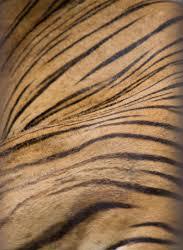
They are solitary and territorial animals; cubs (big cat offspring are not called kittens) stay with their mother for 2 years. These cats are found throughout Asia—although they are endangered—and their population is dwindling.
Lions

Lions are a social species of large cats found in the grasslands and savannas of Africa. Males are recognizable by their long hair surrounding their necks, called manes. Lionesses do the hunting for the pride (social group of lions), which is comprised of several adult males, related females, and cubs. These animals are listed as vulnerable, which means they are close to becoming endangered.
Jaguars

Jaguars are the only member of the Panthera genus found in the Americas. Individual cats can be found in the Western United States, but they have had a reduced range in Central and South America since the early 20th century. They are solitary animals and ambush predators, hunting in tropical and subtropical forests and swamps. They are recognizable by their spots, which are black rosettes with spots in the middle. However, melanistic (or all black) jaguar occasionally appear; these cats are informally known as black panthers—although they are not a separate species—and the phrase “black panther” has been used to describe melanistic leopards as well. Jaguars are near-threatened, which means their numbers are decreasing and their populations are being closely monitored.
Leopards

Leopards have a wide range and are found in Sub-Saharan Africa, in parts of Western and Central Asia and on the Indian subcontinent. They are recognizable by their spots; they look like jaguars with their spotted fur, but leopards are shorter with a smaller head, and their rosette-shaped spots do not have dots in the middle. Leopards are opportunistic hunters, hunting mostly on the ground at night; though in the Serengeti, they are known for attacking prey by leaping from trees. Leopards are listed as vulnerable, meaning they are potentially on their way to the endangered species list.
Snow leopards
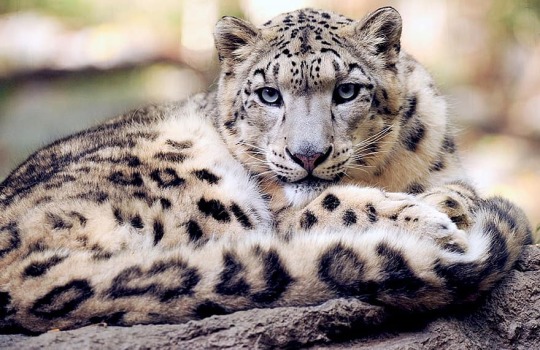
Snow leopards live in the mountain regions of Central and South Asia, living at elevations from 3,000 to 4,500 feet. Their fur is whitish grey, with black rosettes, distinguishing them from other leopards which are yellow or brown in color. Snow leopards have large nasal passages which helps warm the cold, dry air they breathe. Their tails are covered thickly with fur and provide fat storage; sleeping snow leopards use their warm tails like blankets to protect their faces when they sleep. They are listed as vulnerable, meaning they may appear on the endangered species list in the future.
Clouded leopards

There are two species of clouded leopards—the mainland clouded leopard (Neofelis nebulosa) and the Sunda clouded leopard (Neofelis diardi). The mainland clouded leopard is found in the Himalayan foothills in Southeast Asia and southern China and the Sunda clouded leopard is found in Borneo and Sumatra. They are considered an evolutionary link between two cat families Pantherinae and Felinae. Their fur is dark grey with a black blotched pattern. Clouded leopards are solitary and hunt by stalking or ambushing prey. They are excellent climbers and use trees as rest sites. Both species of clouded leopards are listed as vulnerable, meaning they can potentially end up on the endangered species list.
Cougar
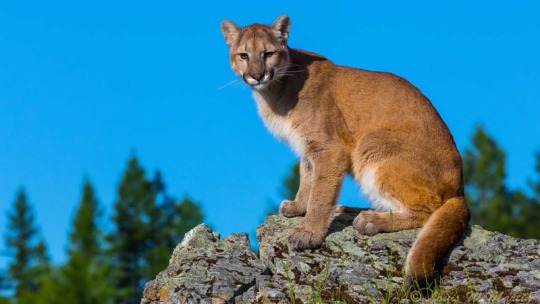
The cougar (also known as a puma, mountain lion, red tiger, or catamount) is the only cat on this list that you may see in the wild around Pittsburgh; however, their populations are severely reduced in the eastern half of North America. These cats are adaptable to a wide variety of habitats, which is why they are found all throughout North and South America. This wide range is the reason people living in different regions have different names for them. They are ambush predators, preferring to hunt deer, though they will eat insects and rodents. While cougars are large, they are not always the apex (or top) predator and will occasionally give food they caught away to jaguars, grizzly bears, or even alligators! Cougars are listed as least concern, meaning their population is holding steady, though their range has shrunk.
Cheetah

Cheetahs are known for their speed; as the fastest land animal, they are capable of running up to 80 miles per hour! Cheetahs can be found in the Serengeti, Saharan mountain ranges, and in hilly areas of Iran. Cheetahs separate into three kinds of social groups—females with cubs, all-male groups, and solitary males. Females are more likely to travel further distances while males will establish and stay in smaller territories. They are active during the day and spend most of their time hunting for things like impala or springbok. Cheetahs are listed as vulnerable, with one of the main threats being a lack of genetic diversity, which makes it difficult for the species to adapt and evolve over generations, reducing the chance for individual animals to survive.
Eurasian lynx

The Eurasian lynx is found from Europe into Central Asia and Siberia, living in temperate or boreal (snow or Taiga) forests. They have short, red-brown coats, and are more colorful than most animals sharing their habitat. In the winter, their fur grows in thicker and greyer. These cats have relatively long legs and large webbed and furred paws that act like snowshoes, allowing them to walk on top of the snow. They have bobbed (or short) tails, much like one of their cousins you might see around Pittsburgh—the bobcat. They hunt small mammals and birds but will occasionally take down young moose or deer. The Eurasian lynx is listed as least concern, with a stable population.
Jo Tauber is the Gallery Experience Coordinator for CMNH’s Life Long Learning Department, as well as the official Registrar for the Living Collection. Museum staff, volunteers, and interns are encouraged to blog about their unique experiences and knowledge gained from working at the museum.
#Carnegie Museum of Natural History#Big Cats#Meowfest#KidsBurgh#Eurasian lynx#Cheetah#Cougar#Clouded leopard#Snow leopard#Leopard#Jaguar#Lion#Tiger
263 notes
·
View notes
Photo

Quick photo dump from the latest two weeks! Swipe through, what’s your favorite animal? 1 gray ratsnake I spotted while getting my wetsuit on before diving a spring 2 Brillo the armadillo! This guy and he rest of the photos are from our visit to @snakebytestv reptarium! 3 two headed California kingsnake! My first time seeing this in person 4&5 Asian water monitor 6 bowser the alligator snapping turtle 7 the two headed king snake again, so cool! 8 Salt and Pepper, albino and melanistic alligators!! So cool to see side by side!! 9 another shot of pepper the melanistic alligator 10 the whole group of us at the reptarium, so much fun!!! Huge thanks again to @snakebytestv #Snake #Alligator #Gator #Reptile #Animal #Animals https://www.instagram.com/p/CbDYga5uvaO/?utm_medium=tumblr
2 notes
·
View notes
Text
Leopards vs Jaguars
Leopard - Panthera pardus


Leopards are found in sub-Sahara Africa, China, India, and the Middle East. There are seven different extant subspecies of leopards. Their coat color depends on what region they live in and what subspecies they are. For example, leopards in arid regions have pale cream-yellowish coats, and those in forests and mountains have a deep golden coloration. Their belly fur is white with no rosettes. They also have white spots on the back of their tail and ears. The spots on their ears are thought to be used for communication. Leopards also have ringed tails. These cats have plain black rosettes with no central spot in the middle of them. Their rosettes are also smaller than a jaguars and more densely packed. Their fur is soft and thick, the length depending on the temperature of their habitat just like the color. There are also melanistic leopards, more commonly known as black panthers. Panthers are most common in tropical areas. Leopards generally have a slight, slender build compared to jaguars. Leopards have relatively short legs for a big cat and a long body. Males can weigh up to 80 kg. Males are approximately 27 inches in height and females approximately 25 inches. Their length varies geographically, from 3 feet to over 6 feet. They’re the fourth largest big cat in the world. These cats can run at speeds up to 36 mph. Leopards hunt mainly at night and commonly take their prey into trees to feed. They’re carnivores and prefer medium-sized prey. These cats often hunt herd animals but often hunt primates and smaller carnivores as well. Compared to jaguars, leopards also do not like water and tend to avoid being in it. Leopards produce many vocalizations, including growling, snarling, meowing, and purring. They have a roar that sounds similar to a grunt or a sawing sound.
Jaguar - Panthera onca


The jaguar is found in Central America and down to Argentina. They were once found more in North America, up to Canada, but are now mainly gone from the area. A few still live in Arizona. Jaguars are the only extant member of their genus native to the Americas. There are nine subspecies of these cats. Their coat is usually a brown-yellow coloration but can be reddish-brown as well. Melanistic jaguars are also known as black panthers, just as with leopards. Jaguars living in the forests tend to have a darker coloration and are smaller. Compared to leopards, jaguars have fewer rosettes with spots in the middle, although they are bigger in size. The rosettes on their head and legs are usually solid and form rings on their tail tips. Jaguars are the third largest big cat in the world, although their size and weight varies. A male jaguars maximum weight is usually 120 kg, with a female being about 90 kg. Their length could be anywhere from about 4 feet to 6 feet. They have the shortest tail of any big cat and have short legs as well, although their legs are very strong. Jaguars are generally stockier and have a more square head than leopards. These cats are extremely strong animals, having the fourth most powerful bite out of all animals. They have the most powerful bite out of all mammals, as alligators and crocodiles are the top three. Jaguars can deliver up to 2,000 pounds of force, easily beating out all other big cats. Jaguars are apex predators and a keystone species, controlling the population levels of many herbivores. They’re carnivores and their preferred prey is the capybara and the giant anteater. They also commonly prey on wild boar, caiman, armadillo, frogs, armored reptiles, and fish. They have also been found to prey on livestock and even black bears. Jaguars are nocturnal and typically prey at night, being most active at dusk and dawn. Like leopards, jaguars also climb trees but not as often and typically do not carry their prey into trees as they are apex predators. However, jaguars do love water and spend a lot of time in it as they often live in wetlands. These big cats roar as a territorial display and has been described as resembling a repetitive cough. They also vocalize meows and grunts.
All information comes from Wikipedia and [here]. Images are not mine.
5 notes
·
View notes

